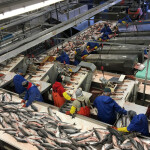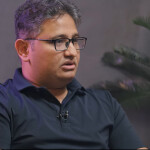Fish farming took center stage during the opening day at the SeaWeb Seafood Summit, as big-picture aquaculture issues were the subject of the first plenary session, followed by a breakout panel on its sustainable growth prospects in the face of soaring global demand.
In the plenary session, “The Impact of Aquaculture on World Protein Markets,” which had a U.S. focus partly due to the participation of Michael Rubino, director of the office of aquaculture for the National Oceanic and Atmospheric Administration (NOAA), the conversation steered to the challenges of domestic aquaculture becoming a larger part of the U.S. seafood supply.
“With local, state and federal permits, it’s quite the gauntlet to go through,” said Rubino, who referred to aquaculture as the “most resource-efficient way to grow food.” Rubino pointed to the state of Maine as the “poster state” for marine aquaculture as it has successfully grown its shellfish and seaweed industries and has strict regulations on salmon farming.
Barton Seaver, chef, author and director of the Healthy Sustainable Food Program at the Harvard University School of Public Health, moved to Maine in the last year or so and called it the “marine equivalent of Central Valley.”
“There’s more America underwater than there is above it. [Aquaculture] is an incredible opportunity,” he said, pointing out that low seafood consumption in the United States is an “epidemic” that increased sustainable aquaculture can help to solve. “We’re not getting the omega-3s. We eat a hundred pounds of beef but only 14 pounds of seafood,” referring to the current U.S. per-capita seafood consumption rate, which was 14.5 pounds in 2013.
One glaring gap in U.S. aquaculture production, Rubino noted, was the lack of farmed whitefish species, which American consumers tend to favor. “We can grow more oysters and clams and mussels and salmon if we solve the social issues. But we don’t have a flaky marine whitefish. Cobia, yellowtail, sablefish or red drum.”
Seaver responded by saying that despite the growth of shellfish farming the products still remain in the margins of the average consumer's mind. “Most Americans don’t like their food to come out of a rock,” he quipped. “Oysters, mussels, and clams are restorative, not just sustainable.”
Plenary session moderator Bill DiMento, chief sustainability officer for High Liner Foods in Lunenburg, Nova Scotia, one of North America’s largest seafood suppliers, asked longtime seafood industry veteran Wally Stevens, the executive director of the Global Aquaculture Alliance, what has slowed aquaculture’s acceptance in the marketplace and in society. His answer was, in essence, the industry itself.
“We’ve done a good job of marginalizing ourselves from one another,” he replied. “NGOs, regulatory folks… shame on us. We need to do it together. And that involves trust. That’s our future.”
Audience members were polled with three questions during the plenary sessions. Here are their answers:
Will farmed seafood solve problems with …
Ocean conservation 5%
Food security 17%
Both 57%
None of the above 21%
Biggest obstacle to increasing consumption?
Disease and antibiotic use 23%
Environmental impacts 39%
Taste or quality 5%
Social issues 16%
Other 18%
Do you eat farmed seafood?
Only farmed oysters 32%
Only farmed shrimp 11%
Only farmed salmon 2%
All 49%
No 7%
Click here to see SeafoodSource's full coverage of SeaWeb Seafood Summit 2015 >





